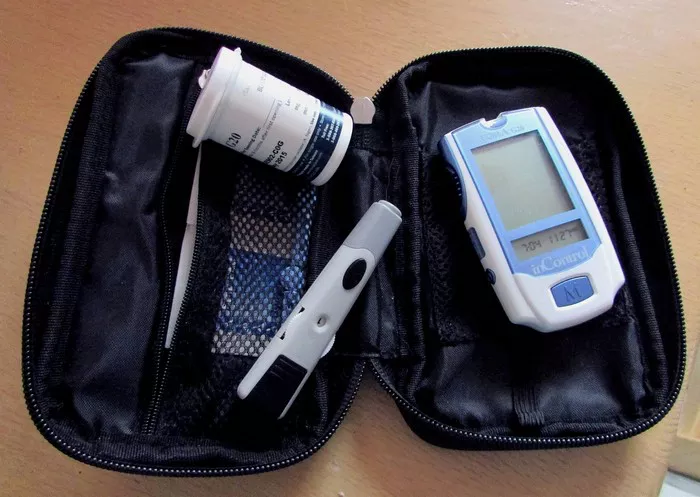Insulin resistance is a metabolic condition where the body’s cells become less responsive to the hormone insulin, leading to elevated blood glucose levels and, over time, potentially resulting in type 2 diabetes. This condition is intricately linked with obesity, sedentary lifestyle, poor diet, and genetic predisposition. Resetting insulin resistance is a crucial goal in managing and preventing type 2 diabetes, but the time required to achieve this can vary greatly depending on several factors. In this article, we will explore the mechanisms of insulin resistance, factors influencing its reversal, and the evidence-based approaches to reset insulin sensitivity.
Understanding Insulin Resistance
Insulin is a hormone produced by the pancreas that facilitates the uptake of glucose into cells, where it is used for energy. In insulin resistance, cells in muscles, fat, and the liver do not respond well to insulin and cannot easily take up glucose from the bloodstream. As a result, the pancreas produces more insulin to help glucose enter cells. Over time, this can lead to elevated insulin levels (hyperinsulinemia) and high blood sugar levels, which are hallmarks of insulin resistance and type 2 diabetes.
Mechanisms of Insulin Resistance
The precise mechanisms underlying insulin resistance are complex and multifactorial, involving genetic, environmental, and physiological factors. Key mechanisms include:
- Intracellular Lipid Accumulation: Excess fatty acids in the bloodstream can accumulate in tissues like the liver and muscle, interfering with insulin signaling pathways.
- Inflammation: Chronic low-grade inflammation, often driven by obesity, can disrupt insulin signaling and glucose metabolism.
- Oxidative Stress: Elevated levels of reactive oxygen species (ROS) can damage cellular structures and impair insulin signaling.
- Mitochondrial Dysfunction: Inefficient energy production in cells can contribute to insulin resistance.
- Hormonal Imbalances: Hormones such as cortisol (stress hormone) can counteract insulin’s effects.
Risk Factors for Insulin Resistance
Several risk factors are associated with the development of insulin resistance:
- Obesity: Particularly abdominal obesity, is a significant risk factor.
- Physical Inactivity: Sedentary lifestyles contribute to poor insulin sensitivity.
- Diet: High intake of refined carbohydrates, sugars, and unhealthy fats can promote insulin resistance.
- Genetics: Family history of diabetes or insulin resistance increases risk.
- Age: Insulin resistance tends to increase with age.
- Medical Conditions: Conditions such as polycystic ovary syndrome (PCOS) and non-alcoholic fatty liver disease (NAFLD) are linked to insulin resistance.
Factors Influencing the Reversal of Insulin Resistance
The time required to reset insulin resistance varies widely among individuals, depending on several key factors:
1. Initial Severity of Insulin Resistance
Individuals with mild insulin resistance may see improvements more quickly than those with severe insulin resistance or type 2 diabetes. Initial fasting insulin and glucose levels, as well as hemoglobin A1c (HbA1c), can provide a baseline for gauging severity.
2. Lifestyle Modifications
Changes in diet, physical activity, and weight management play a crucial role in reversing insulin resistance:
- Diet: Adopting a balanced diet rich in whole foods, fiber, lean proteins, and healthy fats can improve insulin sensitivity. Specific dietary patterns, such as the Mediterranean diet or low-carbohydrate diets, have been shown to be particularly effective.
- Exercise: Regular physical activity, especially aerobic exercise and resistance training, enhances insulin sensitivity by improving glucose uptake in muscles and reducing visceral fat.
- Weight Loss: Even modest weight loss (5-10% of body weight) can significantly improve insulin sensitivity and metabolic health.
3. Pharmacological Interventions
Medications such as metformin, thiazolidinediones, and GLP-1 receptor agonists can improve insulin sensitivity. The effectiveness and time frame for these medications to work can vary based on individual response and adherence.
4. Sleep and Stress Management
Adequate sleep and stress management are often overlooked but crucial components of improving insulin sensitivity. Poor sleep and chronic stress can elevate cortisol levels, which counteract insulin action.
5. Underlying Health Conditions
Conditions such as PCOS and NAFLD need to be managed concurrently to see improvements in insulin sensitivity. For example, addressing liver health in NAFLD through diet and exercise can enhance overall metabolic function.
6. Genetic Factors
Genetic predispositions can influence how quickly an individual responds to lifestyle and pharmacological interventions. While genetics cannot be changed, understanding one’s genetic risk can help tailor more effective treatment strategies.
Evidence-Based Approaches to Reset Insulin Sensitivity
1. Dietary Interventions
Several dietary strategies have been shown to improve insulin sensitivity:
Low-Carbohydrate Diets
Low-carbohydrate diets reduce the intake of sugars and starches, leading to lower insulin levels and improved insulin sensitivity. Studies have shown that low-carb diets can improve glycemic control and reduce HbA1c levels in people with type 2 diabetes within weeks to months.
Mediterranean Diet
The Mediterranean diet, rich in fruits, vegetables, whole grains, nuts, and healthy fats (such as olive oil), has been associated with improved insulin sensitivity and reduced risk of type 2 diabetes. The diet’s emphasis on anti-inflammatory and antioxidant-rich foods can help reduce oxidative stress and inflammation, contributing to better insulin signaling.
Intermittent Fasting
Intermittent fasting (IF) involves cycling between periods of eating and fasting. Research suggests that IF can improve insulin sensitivity and reduce fasting insulin levels. The timing and frequency of fasting periods can vary, but common approaches include the 16:8 method (16 hours of fasting and 8 hours of eating) or the 5:2 method (eating normally for 5 days and consuming very few calories for 2 days).
2. Physical Activity
Regular exercise is one of the most effective ways to improve insulin sensitivity. Both aerobic exercise (such as walking, running, and cycling) and resistance training (such as weight lifting) can enhance glucose uptake by muscles and reduce visceral fat. Studies have shown that consistent exercise can lead to significant improvements in insulin sensitivity within weeks.
Aerobic Exercise
Aerobic exercise increases the heart rate and improves cardiovascular fitness. Activities such as brisk walking, jogging, swimming, and cycling can enhance insulin sensitivity by promoting glucose uptake in muscle cells and reducing inflammation.
Resistance Training
Resistance training, which involves exercises that build muscle strength (such as weight lifting and bodyweight exercises), can also improve insulin sensitivity. Building lean muscle mass increases the body’s capacity to store and utilize glucose, thereby enhancing insulin action.
3. Weight Management
Achieving and maintaining a healthy weight is crucial for reversing insulin resistance. Even modest weight loss can have a significant impact on insulin sensitivity. Studies have shown that a weight loss of 5-10% of body weight can lead to substantial improvements in insulin sensitivity and glycemic control.
Behavioral Interventions
Behavioral interventions, such as cognitive-behavioral therapy (CBT) and motivational interviewing, can support individuals in making sustainable lifestyle changes. These interventions can help address psychological barriers to weight loss and promote long-term adherence to healthy habits.
4. Pharmacological Treatments
In some cases, medications may be necessary to improve insulin sensitivity. Commonly prescribed medications include:
Metformin
Metformin is a first-line medication for type 2 diabetes that works by reducing hepatic glucose production and improving insulin sensitivity in peripheral tissues. It is often prescribed to individuals with prediabetes or early-stage type 2 diabetes and can lead to improvements in insulin sensitivity within weeks to months.
Thiazolidinediones (TZDs)
TZDs, such as pioglitazone, improve insulin sensitivity by activating peroxisome proliferator-activated receptors (PPARs) in adipose tissue, muscle, and liver. These medications can take several weeks to months to achieve their full effect.
GLP-1 Receptor Agonists
GLP-1 receptor agonists, such as liraglutide and semaglutide, enhance insulin secretion, suppress glucagon release, and slow gastric emptying. They can also promote weight loss, further improving insulin sensitivity. The time frame for their effect can vary, but improvements are often seen within weeks.
5. Sleep and Stress Management
Improving sleep quality and managing stress are important for enhancing insulin sensitivity. Chronic sleep deprivation and high stress levels can lead to elevated cortisol, which antagonizes insulin action.
Sleep Hygiene
Adopting good sleep hygiene practices, such as maintaining a regular sleep schedule, creating a restful sleep environment, and avoiding stimulants before bedtime, can improve sleep quality and support insulin sensitivity.
Stress Reduction Techniques
Stress reduction techniques, such as mindfulness meditation, yoga, and deep breathing exercises, can help lower cortisol levels and improve insulin sensitivity. Regular practice of these techniques can lead to improvements in metabolic health over time.
Expected Time Frames for Resetting Insulin Resistance
The time required to reset insulin resistance can vary widely based on individual factors and the interventions employed. Here are some general time frames based on different approaches:
Lifestyle Modifications
- Dietary Changes: Improvements in insulin sensitivity can be seen within weeks to months. For example, a low-carbohydrate or Mediterranean diet can lead to significant reductions in fasting insulin and glucose levels within a few months.
- Exercise: Regular physical activity can improve insulin sensitivity within weeks. Both aerobic and resistance training can lead to noticeable improvements in metabolic markers within 4-12 weeks.
- Weight Loss: Significant improvements in insulin sensitivity can be observed with a weight loss of 5-10% of body weight, which can be achieved within 3-6 months with consistent lifestyle changes.
Pharmacological Interventions
- Metformin: Improvements in insulin sensitivity can be seen within a few weeks to months of starting treatment.
- TZDs: These medications can take several weeks to months to achieve their full effect on insulin sensitivity.
- GLP-1 Receptor Agonists: Improvements in insulin sensitivity and weight loss can be observed within weeks to months.
Combined Approaches
Combining lifestyle modifications with pharmacological treatments can lead to more rapid and substantial improvements in insulin sensitivity. For example, combining a healthy diet, regular exercise, and weight loss with medications such as metformin or GLP-1 receptor agonists can lead to significant improvements within a few months.
Individual Variability
It is important to note that individual variability plays a significant role in the time required to reset insulin resistance. Factors such as genetics, baseline metabolic health, adherence to interventions, and the presence of other medical conditions can influence the rate of improvement.
Conclusion
Resetting insulin resistance is a critical goal in preventing and managing type 2 diabetes. The time required to achieve this can vary widely based on individual factors and the interventions employed. Lifestyle modifications, including dietary changes, regular physical activity, and weight management, are foundational strategies for improving insulin sensitivity. Pharmacological treatments can provide additional support, particularly for individuals with more severe insulin resistance or type 2 diabetes. Addressing sleep quality and stress management further enhances the effectiveness of these interventions.
While improvements in insulin sensitivity can be seen within weeks to months, achieving and maintaining optimal metabolic health is a long-term commitment. Continuous adherence to healthy lifestyle practices and, when necessary, ongoing medical management, are essential for sustaining improvements in insulin sensitivity and reducing the risk of type 2 diabetes. By adopting a comprehensive and individualized approach, individuals can effectively reset insulin resistance and achieve better metabolic health.
Related topics:
The Insulin for Various Types of Diabetes
























